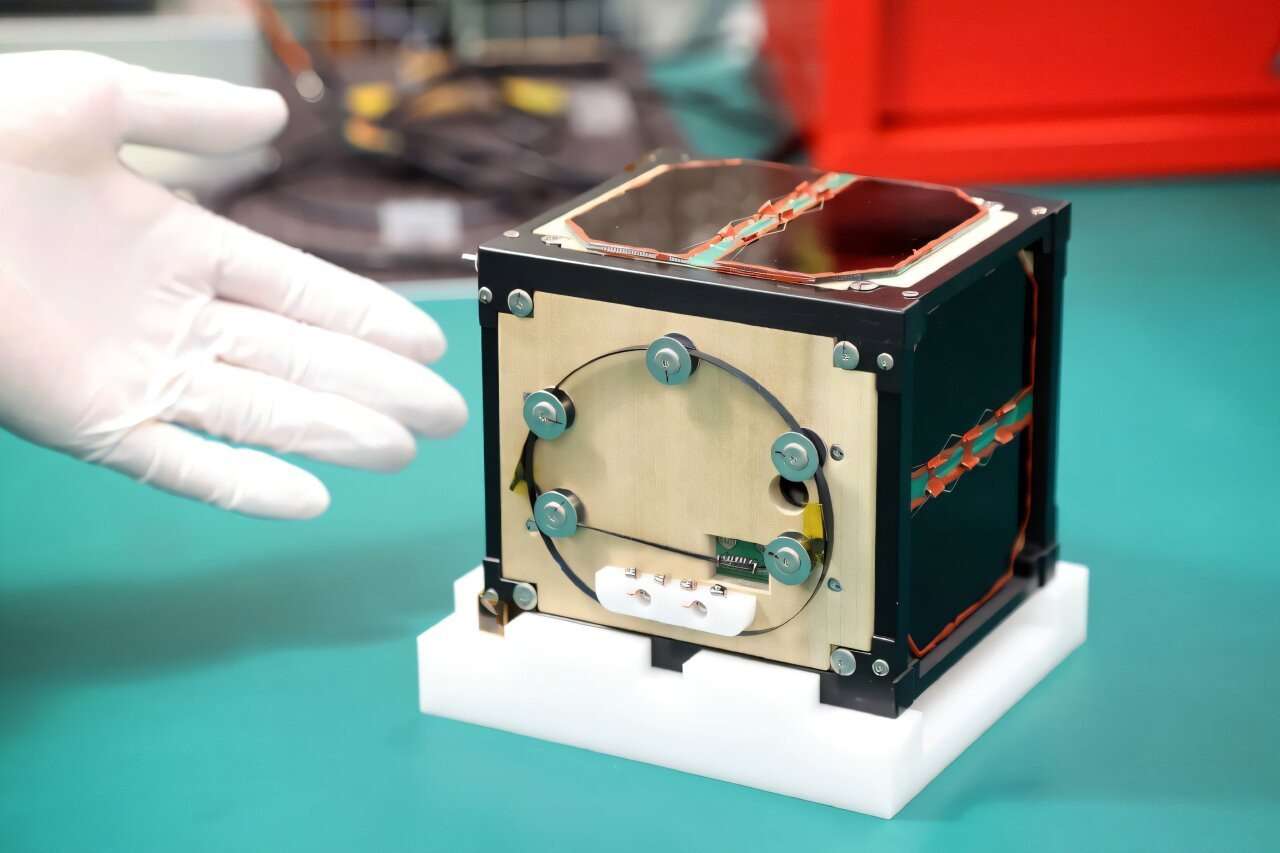Introduction
In a groundbreaking advancement in satellite technology, Japan has launched the world’s first wooden satellite aboard a SpaceX rocket. This innovative project, developed by scientists at Kyoto University in collaboration with Sumitomo Forestry, aims to revolutionize satellite design and sustainability. This article delves into the details of this historic mission, exploring the potential benefits and challenges of using wooden materials in space.
The Launch of LignoSat
A New Era in Satellite Design
The satellite, named LignoSat, is a small, box-like structure with each side measuring just 10 centimeters (four inches). Despite its diminutive size, LignoSat represents a significant leap forward in satellite technology. The satellite was launched on an unmanned SpaceX rocket from NASA’s Kennedy Space Center in Florida, as part of a resupply mission to the International Space Station (ISS).
Objectives and Expectations
Kyoto University scientists expect the wooden material to burn up completely upon re-entry into Earth’s atmosphere. This characteristic could provide a solution to the growing problem of space debris, specifically metal particles that can adversely affect both the environment and telecommunications. By using wood, the satellite aims to reduce the ecological footprint of space missions.
The Development of LignoSat
Collaboration Between Kyoto University and Sumitomo Forestry
The development of LignoSat was a collaborative effort between Kyoto University’s Human Spaceology Center and Sumitomo Forestry. The project leverages the unique properties of wood, such as its strength and durability, while also addressing environmental concerns associated with traditional satellite materials.
The Launch Process
The satellite was carefully installed in a special container prepared by the Japan Aerospace Exploration Agency (JAXA). Following a successful launch, the satellite is now on its way to the ISS. According to a spokeswoman for Sumitomo Forestry, the launch was successful, and LignoSat is expected to arrive at the ISS soon. About a month after arrival, it will be released into outer space to test its strength and durability.
Testing and Data Collection
Monitoring the Satellite’s Performance
Once in orbit, LignoSat will send data back to researchers on Earth. This data will be crucial in determining the satellite’s ability to withstand extreme temperature changes and other harsh conditions in space. Researchers will monitor for signs of strain and degradation, assessing the feasibility of using wood for future satellite missions.
Potential Impact on Future Satellite Design
The success of LignoSat could pave the way for a new era in satellite design. Using materials that burn up completely upon re-entry could significantly reduce space debris, addressing one of the major challenges in modern space exploration.
Expert Opinions
Insights from Takao Doi
Takao Doi, an astronaut and special professor at Kyoto University, has been a vocal advocate for the use of non-metal materials in satellite design. At a press conference earlier this year, Doi emphasized the potential benefits of wooden satellites. He argued that satellites not made of metal should become mainstream, highlighting their environmental advantages and potential to reduce space debris.
FAQs
1. What is LignoSat?
LignoSat is the world’s first wooden satellite, developed by Kyoto University in collaboration with Sumitomo Forestry. It aims to test the feasibility of using wood as a satellite material to reduce space debris.
2. Why use wood for satellites?
Wood is being tested as a satellite material because it burns up completely upon re-entry into Earth’s atmosphere, potentially preventing the generation of harmful metal particles that contribute to space debris.
3. What are the potential benefits of wooden satellites?
Wooden satellites could reduce space debris, have a smaller ecological footprint, and provide a sustainable alternative to traditional satellite materials.
4. How will the performance of LignoSat be tested?
LignoSat will send data back to researchers on Earth, who will monitor its performance for signs of strain and durability. The data will help determine if wood is a viable material for future satellite missions.
5. When will LignoSat be released into space?
LignoSat will be released into outer space about a month after arriving at the ISS to begin its testing phase.
Conclusion
The launch of LignoSat marks a historic moment in space exploration and satellite technology. By testing the viability of wooden materials in space, Kyoto University and Sumitomo Forestry are pioneering a new approach to satellite design that prioritizes sustainability and environmental responsibility. If successful, this project could lead to significant advancements in reducing space debris and promoting the use of eco-friendly materials in space missions
ALSO READ:
https://flarenews.pk/2024/11/06/aurangzeb-advocates-for-proactive-action-on-remit-goals/



